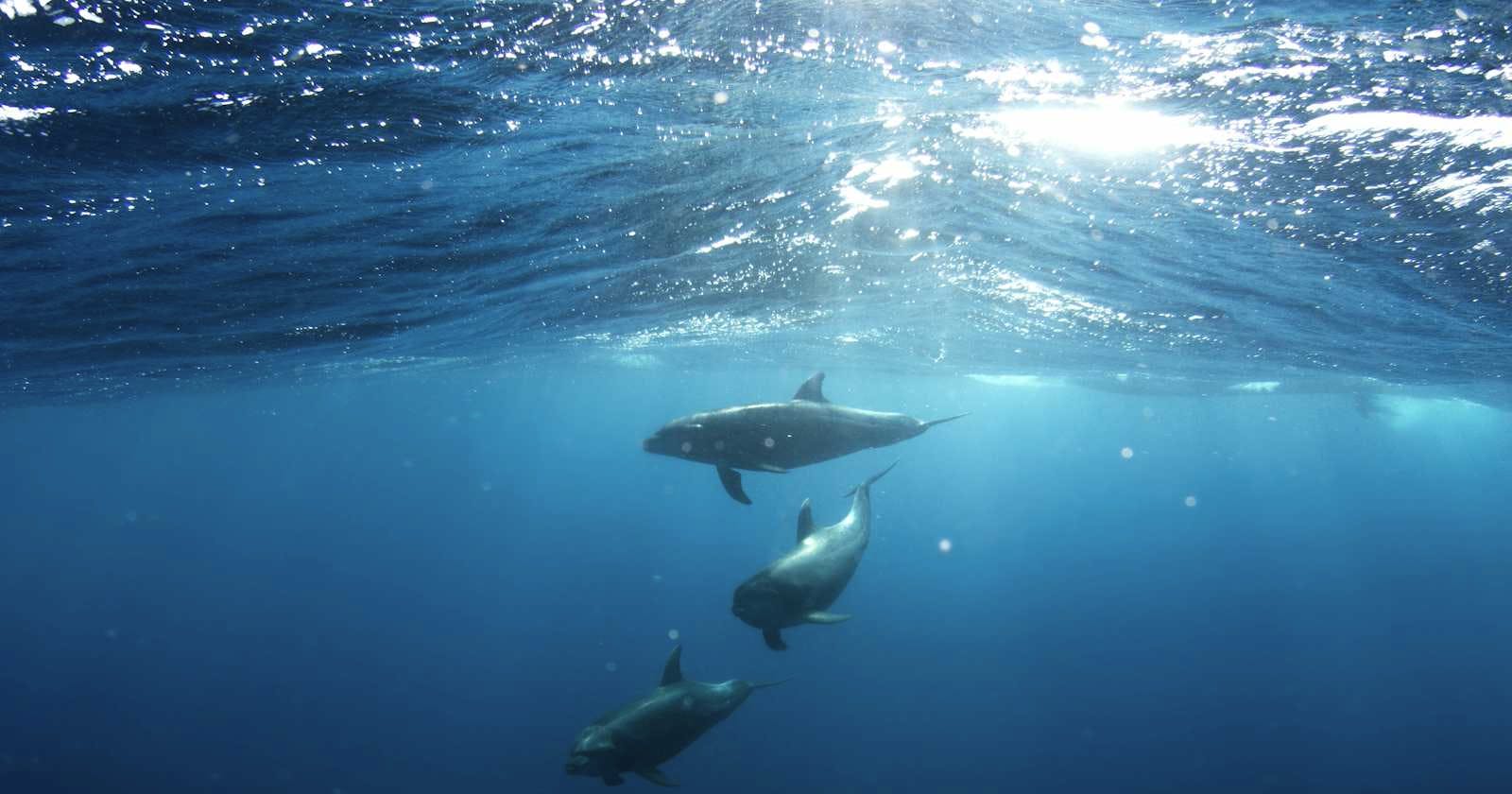Description
This is the final project in the Data Analysis certification course provided by freeCodeCamp. The detailed explanation of the requirements can be found in their website, but the general idea is that we need to create a scatter plot and use it to visualize and predict the sea level change through year 2050.
Project Detail
The folder structure of the project is as follows:
Medical-Data-Visualizer/
│
├── epa-sea-level.csv
├── sea_level_predictor.py
├── main.py
└── test_module.py
The project is initialized through main.py and the provided test_module.py is automatically executed when we initialize the program:
# main.py
# This entrypoint file to be used in development. Start by reading README.md
import sea_level_predictor
from unittest import main
# Test your function by calling it here
sea_level_predictor.draw_plot()
# Run unit tests automatically
main(module='test_module', exit=False)
# test_module.py
import unittest
import sea_level_predictor
import matplotlib as mpl
import numpy as np
# the test case
class LinePlotTestCase(unittest.TestCase):
def setUp(self):
self.ax = sea_level_predictor.draw_plot()
def test_plot_title(self):
actual = self.ax.get_title()
expected = "Rise in Sea Level"
self.assertEqual(actual, expected, "Expected line plot title to be 'Rise in Sea Level'")
def test_plot_labels(self):
actual = self.ax.get_xlabel()
expected = "Year"
self.assertEqual(actual, expected, "Expected line plot xlabel to be 'Year'")
actual = self.ax.get_ylabel()
expected = "Sea Level (inches)"
self.assertEqual(actual, expected, "Expected line plot ylabel to be 'Sea Level (inches)'")
actual = self.ax.get_xticks().tolist()
expected = [1850.0, 1875.0, 1900.0, 1925.0, 1950.0, 1975.0, 2000.0, 2025.0, 2050.0, 2075.0]
self.assertEqual(actual, expected, "Expected x tick labels to be '1850.0, 1875.0, 1900.0, 1925.0, 1950.0, 1975.0, 2000.0, 2025.0, 2050.0, 2075.0'")
def test_plot_data_points(self):
actual = self.ax.get_children()[0].get_offsets().data.tolist()
expected = [[1880.0, 0.0], [1881.0, 0.220472441], [1882.0, -0.440944881], [1883.0, -0.232283464], [1884.0, 0.590551181], [1885.0, 0.531496062], [1886.0, 0.437007874], [1887.0, 0.216535433], [1888.0, 0.299212598], [1889.0, 0.362204724], [1890.0, 0.440944881], [1891.0, 0.374015748], [1892.0, 0.499999999], [1893.0, 0.685039369], [1894.0, 0.303149606], [1895.0, 0.767716535], [1896.0, 0.468503937], [1897.0, 0.673228346], [1898.0, 1.043307086], [1899.0, 1.338582676], [1900.0, 1.125984251], [1901.0, 1.110236219], [1902.0, 1.291338581], [1903.0, 1.606299211], [1904.0, 1.2007874], [1905.0, 0.984251968], [1906.0, 1.251968503], [1907.0, 1.196850392], [1908.0, 1.098425196], [1909.0, 1.27559055], [1910.0, 1.271653542], [1911.0, 1.598425195], [1912.0, 1.476377951], [1913.0, 1.547244093], [1914.0, 1.795275589], [1915.0, 2.10629921], [1916.0, 2.031496061], [1917.0, 1.854330707], [1918.0, 1.791338581], [1919.0, 1.854330707], [1920.0, 1.905511809], [1921.0, 1.988188974], [1922.0, 1.952755904], [1923.0, 1.999999998], [1924.0, 1.712598423], [1925.0, 1.791338581], [1926.0, 2.047244092], [1927.0, 2.003937006], [1928.0, 1.850393699], [1929.0, 1.905511809], [1930.0, 2.062992124], [1931.0, 2.047244092], [1932.0, 2.271653541], [1933.0, 2.440944879], [1934.0, 2.228346454], [1935.0, 2.448818895], [1936.0, 2.295275588], [1937.0, 2.519685037], [1938.0, 2.622047241], [1939.0, 2.826771651], [1940.0, 2.618110234], [1941.0, 3.098425194], [1942.0, 3.098425194], [1943.0, 3.098425194], [1944.0, 2.84645669], [1945.0, 2.95669291], [1946.0, 3.251968501], [1947.0, 3.374015745], [1948.0, 3.562992122], [1949.0, 3.51181102], [1950.0, 3.598425193], [1951.0, 3.972440941], [1952.0, 3.870078736], [1953.0, 4.043307082], [1954.0, 3.929133854], [1955.0, 3.964566925], [1956.0, 3.763779524], [1957.0, 4.291338578], [1958.0, 4.346456688], [1959.0, 4.358267712], [1960.0, 4.503937003], [1961.0, 4.748031491], [1962.0, 4.543307082], [1963.0, 4.480314956], [1964.0, 4.169291334], [1965.0, 4.610236216], [1966.0, 4.397637791], [1967.0, 4.452755901], [1968.0, 4.484251964], [1969.0, 4.751968499], [1970.0, 4.67716535], [1971.0, 4.881889759], [1972.0, 5.240157475], [1973.0, 5.003937003], [1974.0, 5.472440939], [1975.0, 5.409448813], [1976.0, 5.370078735], [1977.0, 5.303149601], [1978.0, 5.555118105], [1979.0, 5.362204719], [1980.0, 5.598425191], [1981.0, 6.086614167], [1982.0, 5.858267711], [1983.0, 6.188976372], [1984.0, 6.153543301], [1985.0, 5.74803149], [1986.0, 5.771653537], [1987.0, 5.795275585], [1988.0, 5.980314955], [1989.0, 6.157480309], [1990.0, 6.232283458], [1991.0, 6.334645663], [1992.0, 6.35826771], [1993.0, 6.291338576], [1994.0, 6.499999993], [1995.0, 6.618110229], [1996.0, 6.787401568], [1997.0, 7.066929127], [1998.0, 6.665354324], [1999.0, 7.011811016], [2000.0, 7.062992119], [2001.0, 7.287401567], [2002.0, 7.381889756], [2003.0, 7.759842512], [2004.0, 7.740157472], [2005.0, 7.74409448], [2006.0, 7.917322827], [2007.0, 7.996062984], [2008.0, 8.350393692], [2009.0, 8.586614164], [2010.0, 8.901574794], [2011.0, 8.96456692], [2012.0, 9.326771644], [2013.0, 8.980314951]]
np.testing.assert_almost_equal(actual, expected, 7, "Expected different data points in scatter plot.")
def test_plot_lines(self):
actual = self.ax.get_lines()[0].get_ydata().tolist()
expected = [-0.5421240249263661, -0.4790794409142336, -0.41603485690208686, -0.3529902728899543, -0.2899456888778218, -0.22690110486568926, -0.16385652085355673, -0.1008119368414242, -0.037767352829277456, 0.025277231182855076, 0.08832181519498761, 0.15136639920712014, 0.21441098321925267, 0.2774555672313852, 0.34050015124351773, 0.4035447352556645, 0.466589319267797, 0.5296339032799295, 0.5926784872920621, 0.6557230713041946, 0.7187676553163271, 0.7818122393284739, 0.8448568233406064, 0.9079014073527389, 0.9709459913648715, 1.033990575377004, 1.0970351593891365, 1.1600797434012833, 1.2231243274134158, 1.2861689114255483, 1.3492134954376809, 1.4122580794498134, 1.475302663461946, 1.5383472474740927, 1.6013918314862252, 1.6644364154983577, 1.7274809995104903, 1.7905255835226228, 1.8535701675347553, 1.9166147515468879, 1.9796593355590346, 2.042703919571167, 2.1057485035832997, 2.168793087595432, 2.2318376716075647, 2.2948822556196973, 2.357926839631844, 2.4209714236439766, 2.484016007656109, 2.5470605916682416, 2.610105175680374, 2.6731497596925067, 2.7361943437046534, 2.799238927716786, 2.8622835117289185, 2.925328095741051, 2.9883726797531835, 3.051417263765316, 3.1144618477774486, 3.1775064317895954, 3.240551015801728, 3.3035955998138604, 3.366640183825993, 3.4296847678381255, 3.492729351850258, 3.5557739358624048, 3.6188185198745373, 3.68186310388667, 3.7449076878988024, 3.807952271910935, 3.8709968559230674, 3.934041439935214, 3.9970860239473467, 4.060130607959479, 4.123175191971612, 4.186219775983744, 4.249264359995877, 4.312308944008024, 4.375353528020156, 4.438398112032289, 4.501442696044421, 4.564487280056554, 4.627531864068686, 4.690576448080819, 4.7536210320929655, 4.816665616105098, 4.879710200117231, 4.942754784129363, 5.005799368141496, 5.068843952153628, 5.131888536165775, 5.194933120177907, 5.25797770419004, 5.3210222882021725, 5.384066872214305, 5.4471114562264376, 5.510156040238584, 5.573200624250717, 5.636245208262849, 5.699289792274982, 5.762334376287114, 5.825378960299247, 5.8884235443113795, 5.951468128323526, 6.014512712335659, 6.077557296347791, 6.140601880359924, 6.203646464372056, 6.266691048384189, 6.329735632396336, 6.392780216408468, 6.455824800420601, 6.518869384432733, 6.581913968444866, 6.644958552456998, 6.708003136469145, 6.771047720481278, 6.83409230449341, 6.897136888505543, 6.960181472517675, 7.023226056529808, 7.086270640541954, 7.149315224554087, 7.2123598085662195, 7.275404392578352, 7.338448976590485, 7.401493560602617, 7.46453814461475, 7.527582728626896, 7.590627312639029, 7.653671896651161, 7.716716480663294, 7.7797610646754265, 7.842805648687559, 7.905850232699706, 7.968894816711838, 8.03193940072397, 8.094983984736103, 8.158028568748236, 8.221073152760368, 8.284117736772515, 8.347162320784648, 8.41020690479678, 8.473251488808913, 8.536296072821045, 8.599340656833178, 8.66238524084531, 8.725429824857457, 8.78847440886959, 8.851518992881722, 8.914563576893855, 8.977608160905987, 9.040652744918134, 9.103697328930252, 9.166741912942399, 9.229786496954517, 9.292831080966664, 9.35587566497881, 9.41892024899093, 9.481964833003076, 9.545009417015194, 9.608054001027341, 9.671098585039488, 9.734143169051606, 9.797187753063753, 9.860232337075871, 9.923276921088018, 9.986321505100136, 10.049366089112283, 10.11241067312443, 10.175455257136548]
np.testing.assert_almost_equal(actual, expected, 7, "Expected different line for first line of best fit.")
actual = self.ax.get_lines()[1].get_ydata().tolist()
expected = [7.06107985777146, 7.227507131103323, 7.393934404435242, 7.560361677767105, 7.726788951098968, 7.89321622443083, 8.059643497762693, 8.226070771094555, 8.392498044426418, 8.55892531775828, 8.725352591090143, 8.891779864422006, 9.058207137753925, 9.224634411085788, 9.39106168441765, 9.557488957749513, 9.723916231081375, 9.890343504413238, 10.0567707777451, 10.223198051076963, 10.389625324408826, 10.556052597740688, 10.72247987107255, 10.88890714440447, 11.055334417736333, 11.221761691068195, 11.388188964400058, 11.55461623773192, 11.721043511063783, 11.887470784395646, 12.053898057727508, 12.220325331059371, 12.386752604391233, 12.553179877723153, 12.719607151055015, 12.886034424386878, 13.05246169771874, 13.218888971050603, 13.385316244382466, 13.551743517714328, 13.718170791046191, 13.884598064378054, 14.051025337709916, 14.217452611041836, 14.383879884373698, 14.55030715770556, 14.716734431037423, 14.883161704369286, 15.049588977701148, 15.216016251033011, 15.382443524364874]
np.testing.assert_almost_equal(actual, expected, 7, "Expected different line for second line of best fit.")
if __name__ == "__main__":
unittest.main()
The contents of the .csv file can be visualized as such:
| Year | CSIRO Adjusted Sea Level | Lower Error Bound | Upper Error Bound | NOAA Adjusted Sea Level |
|------|--------------------------|-------------------|-------------------|-------------------------|
| 1993 | 6.291338576 | 6.027559049 | 6.555118104 | 6.297493046 |
| 1994 | 6.499999993 | 6.236220466 | 6.763779521 | 6.310933553 |
| 1995 | 6.618110229 | 6.354330702 | 6.881889757 | 6.452568661 |
| 1996 | 6.787401568 | 6.523622041 | 7.051181095 | 6.62763131 |
Finally the logical 🤓 part. The sea_level_predictor.py file contains the main logic:
# sea_level_predictor.py
import pandas as pd
import matplotlib.pyplot as plt
from scipy.stats import linregress
def draw_plot():
# Read data from file
df = pd.read_csv('epa-sea-level.csv')
# Create scatter plot
plt.scatter(df['Year'], df['CSIRO Adjusted Sea Level'], s = 5)
# Create first line of best fit
fit1 = linregress(df['Year'], df['CSIRO Adjusted Sea Level'])
first_years = pd.Series(range(1880, 2051)) # x1
y_pred = fit1.intercept + fit1.slope * first_years # y1
plt.plot(first_years, y_pred, color='red')
# Create second line of best fit
df2 = df[df['Year'] >= 2000 ]
fit2 = linregress(df2['Year'], df2['CSIRO Adjusted Sea Level'])
second_years = pd.Series(range(2000,2051)) # x2
y_pred2 = fit2.intercept + fit2.slope * second_years # y2
plt.plot(second_years, y_pred2, color='green')
# Add labels and title
plt.xlabel('Year')
plt.ylabel('Sea Level (inches)')
plt.title('Rise in Sea Level')
# Save plot and return data for testing (DO NOT MODIFY)
plt.savefig('sea_level_plot.png')
return plt.gca()
The code is as straight forward as it can get. Read the data, get the prediction line and visualize it.
Initially as instructed, I used the linregress() function to get the slope and y-intercept of the line of best fit. I made the line go through the year 2050 to predict the sea level rise in 2050:
fit1 = linregress(df['Year'], df['CSIRO Adjusted Sea Level'])
first_years = pd.Series(range(1880, 2051)) # x1
y_pred = fit1.intercept + fit1.slope * first_years # y1
Then, I plotted the prediction with the scatter plot:
# Create scatter plot
plt.scatter(df['Year'], df['CSIRO Adjusted Sea Level'], s = 5)
plt.plot(first_years, y_pred, color='red')
And now for the second line of best fit, I created another data frame but this time the data starts from the year 2000:
df2 = df[df['Year'] >= 2000 ]
Then again, I calculated the slope and y-intercept of the line of the second best fit:
fit2 = linregress(df2['Year'], df2['CSIRO Adjusted Sea Level'])
second_years = pd.Series(range(2000,2051)) # x2
y_pred2 = fit2.intercept + fit2.slope * second_years # y2
Then, I plotted the second prediction line as well and added some labels and title:
plt.plot(second_years, y_pred2, color='green')
# Add labels and title
plt.xlabel('Year')
plt.ylabel('Sea Level (inches)')
plt.title('Rise in Sea Level')
Insights
This was one of the shortest project in the certification course. Prediction capability of data is what made me fall in love with it 💙. So, I was very happy to able to predict and visualize such interesting data. Seeing the mathematics that I learned in high school being applied here made me happy too, because I thought I would never use this outside of school. We have all been there let's be real now 🤣.
Conclusion
This final project was the perfect ending to the certification course. Simple yet insightful ✨. And like before, you should try it own your own 💪 and if stuck can check out this blog again or my repo.
And with this, it's the end of the certification program. And here is my certificate 😁. Am very proud of it hehe:
Hope you guys enjoyed following my articles, and if you did do hit the subscribe button to follow-up on more new contents 🧐. I am planning to document my whole journey so yea help a fellow learner out 😁. And as always, see ya later 👋.


